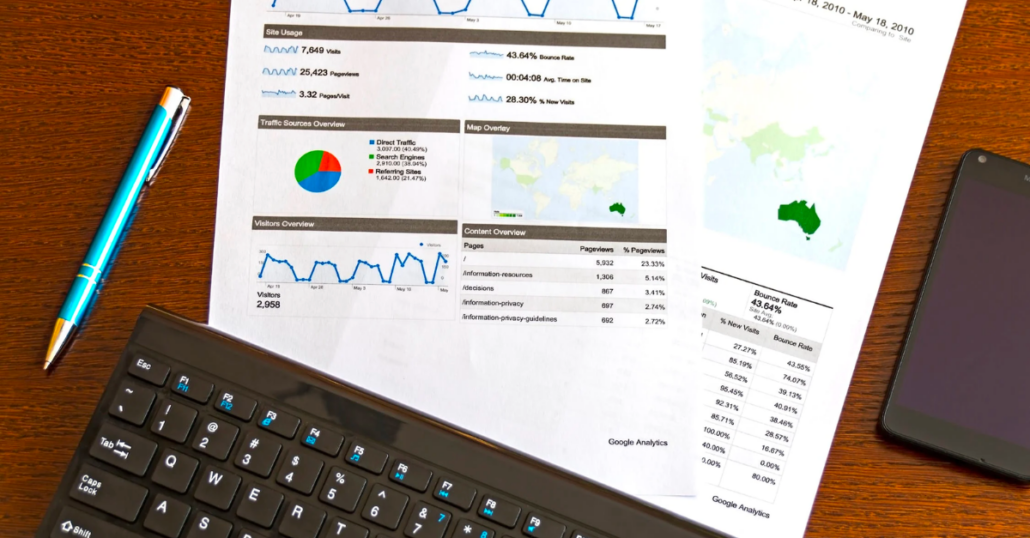
AI and ML are assisting salespeople in maximizing income opportunities. They achieve this by utilizing data from content analytics to obtain valuable insights.
AI-guided selling blends human intelligence with machine learning. Every interaction with a customer creates data that sheds light on sales activity.
Therefore, B2B firms can develop a thorough picture of sales activity. They combine this data from several systems inside a go-to-market (GTM) tech stack. Contextual data becomes worth more than any data a single seller can examine when gathered at scale.
Patterns and behaviors found in large data sets can lead to new possibilities. By translating sales-related data to generate targeted recommendations for revenue teams, machine learning greatly aids sellers.
Predictive analytics AI
AI predictive analytics predicts future events using historical data and analytics methods like statistical modeling and machine learning. Future insights operate with impressive precision when identifying best sellers using AI for predictive analytics.
Any firm may now use historical and current data to accurately predict trends and actions in milliseconds, days, or years in the future with the aid of advanced predictive analytics tools and models.

Big data, mining information, statistical analysis, machine learning, and various complex operations are just a few of the techniques and technology that AI predictive analytics for retail uses significantly.
By utilizing past and present data, businesses, with the help of AI in predictive analytics, identify trends and forecast events and circumstances that should occur at a given time, depending on given occasions.
In additon…
Organizations also enhance their cross-sell opportunities, garnering new purchases by optimizing marketing efforts using predictive analytics. In this way, predictive analytics assist brands in attracting, keeping, and nurturing their most important clients.
Additionally, illegal activities, such as credit card fraud, corporate espionage, and cyberattacks, can be identified and stopped using predictive analytics before significant harm happens.
Predictive analysis allows brands to stay ahead of the game in pretty much every aspect. Brands are able to stay ahead of the competition, see upcoming trends that may be tangential to the business (i.e. weather patterns or shortages). AI is only going to become more adept at providing an accurate depiction of what is coming around the bed, allowing you to prepare for just about anything.
AI will also be able to take action on predictions so you don’t have to. Rather than simply acting as an alerting feature, a proper AI function should take action as well to eliminate any chance of human error. Human supervision is only required to ensure the proper actions were taken and everything went according to plan.
Customer segmentation using AI
Customer segmentation AI organizes a client base into segments of customers with similar requirements and characteristics. Businesses using this AI software can better understand and attract clients by creating personalized marketing messages and product offerings.

To develop services and goods that cater to the interests and preferences of various consumer groups, influential AI customer segmentation of consumers is crucial.
Businesses can then improve and alter their offerings to maximize value for their customers by understanding the unique needs of each customer segment. As a result, it enhances income, increases customer pleasure, and encourages client loyalty.
The quantity of consumer information you have at your disposal largely determines how much segmentation you can create. Gender, interest, and age are fundamental variables followed by more complicated ones like “time since a customer entered our app” and “time spent exploring website X.”
AI-based customer segmentation helps businesses customize marketing materials and campaigns for different client segments, increasing conversions, engagement, and brand loyalty.

By learning about diverse groups’ distinctive traits and behaviors, AI for consumer segmentation enables personalized experiences. Businesses can concentrate on creating innovative products that serve the demands of their intended consumers by investigating the particular requirements and issues of diverse segments.
By identifying cost-conscious segments and the ensuing capacity for businesses to customize pricing strategies and discounts, customer segmentation AI helps optimize prices by increasing popularity and revenue while attracting and maintaining customers.
How?
AI tailors product recommendations based on specific attributes and individual preferences to enhance the customer journey. This enables your marketing team to perpetually monitor customer trends effortlessly, as the AI discerns buying habits and pinpoints products of similar characteristics. Even further, it crafts three distinct product descriptions according to brand voice, allowing for effortless A/B testing to discern the most resonant copy for varied customer groups.
This functionality shines especially when you operate across multiple marketplaces, catering to different customer expectations. Through A/B testing, you can pinpoint customer inclinations and select the most fitting product narrative for each platform. As you expand into varied marketplaces, you benefit from minimized research efforts, positioning you to engage new demographics more swiftly.
AI is your ace in the hole for product attributes. It adeptly draws from credible sources to decode complex product details. It lets you automate spec and sells sheets, tap into diverse marketplaces, and evolve into a celebrated brand known for delivering best-in-class experiences to an expanding clientele.
AI Sentiment Analysis
This cutting-edge program uses artificial intelligence to analyze digital language to identify whether the content’s state of mind is favorable, adverse, or neutral. These days, organizations have a lot of text data, such as emails, transcripts of customer care chats, comments on social media, and reviews. Software for sentiment analysis can read this text and extract the author’s position on a particular topic. Businesses employ open AI sentiment analysis to improve customer service and brand recognition.

A customer sentiment analysis AI tool monitors replies to surveys, chat support chats, and consumer reviews on various online review sites. The customer sentimentality AI analyzes customer feedback by examining the gathered information and identifying the words used in it.
It selects words that express intentions and feelings and presents them to you as a word cloud for analysis. The spectrum of emotions in the examined data shines through a sentiment analysis tool.
How do businesses use it?
Businesses can understand their level of customer service and what needs to improve through this method. To restore the happiness of disgruntled customers, they can use sentiment analysis to separate supporters from detractors. A sentiment analysis AI program benefits an organization in the following ways:
- Enables you to recognize and add your devoted customers to your loyalty program.
- It draws attention to customer pain issues that you might not have thought to address them.
- Your marketing efforts, catchphrases, and social media posts occasionally may not elicit the responses you were hoping for from your target demographic. Utilize a brand sentiment tool to gauge the success of your marketing initiatives.
- AI used for customer sentiment analysis can compile and present customer feedback from many platforms.
- Customer feedback is automatically processed, and emotional intentions become apparent.
- Competitor analysis can help you determine what competitors are doing wrong so you can improve lead generation.

Basket market analysis
Retailers use market basket analysis, a method for mining data, to increase sales by better understanding customer purchasing patterns.
By examining massive data sets, such as purchasing histories, it is feasible to determine which kinds of products and goods are most likely to be bought together.
The primary goal of analyzing market baskets is pinpointing the goods customers desire. Market basket analysis tools help marketing and sales teams develop more effective cross-sell, up-sell, and placement of product strategies.
Market basket analysis boosts consumer satisfaction and revenue. To increase future sales of particular combinations, retailers might utilize data to identify products that are frequently purchased together. They can alter their product placement, provide special discounts, and introduce new product bundles.
These improvements can add value to the customer’s shopping experience while increasing the store’s income. If market basket analysis works appropriately, customers may have a more favorable view or sense of devotion toward the company.

Bottom Line
The use of AI in the retail and B2B industry is rapidly gaining significance due to the transforming benefits it provides in identifying and attracting your biggest sellers.
You can quickly scale your business by targeting potential buyers through innovative applications. Do not hesitate to contact us at Pimberly if you consider using the AI tools mentioned above to identify potential sellers.












